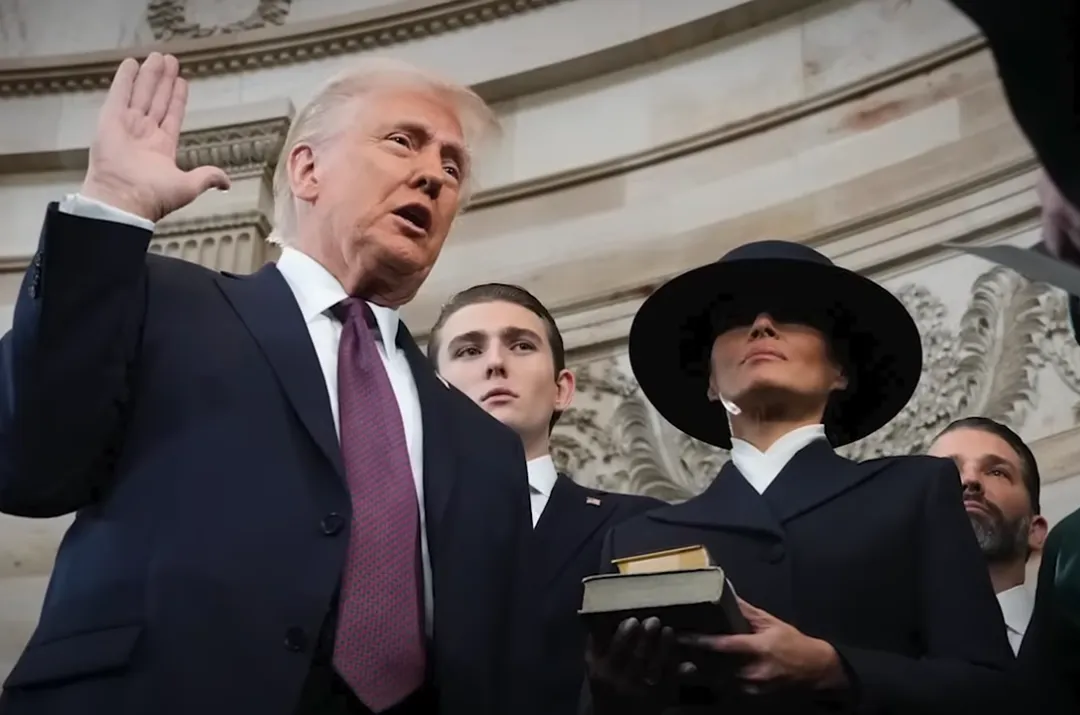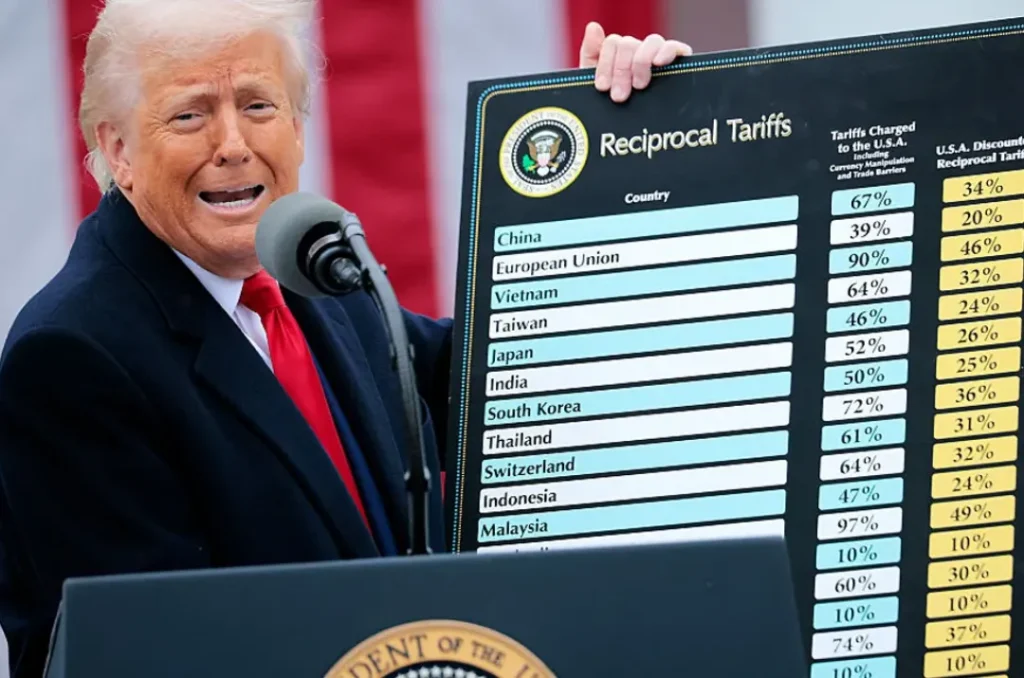Donald Trump announced a policy of “reciprocal tariffs,” stating that any country imposing tariffs on the US would face a 50% tariff in return, proportional to their own tariffs. He showcased a board listing several countries, including India, and described the move as a “kind tariff,” while hinting at possible future increases.
However, the tariffs implemented are not truly reciprocal. Instead of directly mirroring the tariff rates imposed by other countries, the US uses a formula based on its trade deficit with each country.
The calculation method appears to be: (Trade Deficit with a country / Total Exports of that country to the US) x 100, with roughly half of that percentage used as the imposed tariff.
For example, the tariff imposed on India is 26%, even though India applies tariffs up to 90% on some US products. Vietnam faces a 46% tariff, despite having maximum tariffs between 0–50%, due to its larger trade surplus with the US.
This method effectively means that countries with larger trade surpluses with the US face higher tariffs, regardless of their own tariffs on US goods. Therefore, the term “reciprocal tariff” is misleading in the commonly understood sense.
Global and Domestic Repercussions
The announcement triggered a sharp decline in stock markets globally. The Indian share market reportedly lost ₹20 lakh crore in a single day. Several global indices fell heavily. In response to China’s retaliatory tariffs, the Hong Kong Stock Exchange dropped by 13%, while Taiwan’s index hit the lower circuit, falling over 9%.
While India’s pharmaceutical sector was initially exempt, there is growing concern that it may be included in the future. Other sectors, such as automobiles and manufacturing, are expected to face negative impacts.
The investor community remains anxious, not just due to the tariffs themselves but also the unpredictable way they were introduced. Even those anticipating action were caught off guard by the scale and method of implementation.
Tariff levels differ from country to country, resulting in distinct regional outcomes. For example, the higher tariff on Vietnam (46%) compared to India (26%) could negatively affect Vietnam’s manufacturing hubs. The stock price of Hon Hai Precision Industry (Foxconn), which operates heavily in China and Vietnam, fell by approximately 20% as a result.
The tariffs have triggered a rise in anti-US sentiment around the world. In Canada, there have been protests and boycotts of American products. In Germany, Tesla cars have reportedly been set on fire. These reactions suggest long-term risks to US trade relationships and global brand perception.
The US may also face significant internal consequences. High domestic labor costs make local manufacturing expensive. If other countries retaliate with tariffs of their own, US exports could take a hit. Consumers in the US might also face rising prices for imported goods, especially from China.
Escalating US-China Tensions
Initially, the US tariffs appeared to be a one-way move. However, China quickly responded with a 34% tariff on US goods. This tit-for-tat escalation marks a deepening of trade tensions between the two powers.
The US approach, including tariffs on China, is not purely reciprocal. It follows the same trade-deficit-based formula, meaning countries like China with large trade surpluses face steeper tariffs.
Underlying this is a broader geopolitical and economic rivalry. The US views itself as a declining power compared to China, which is rapidly advancing in innovation and manufacturing. While the US focuses heavily on defense spending, China is investing in tech and industrial growth, intensifying American concerns over its global competitiveness.
The fallout is being felt on both sides. The Chinese market, too, suffered—Hong Kong’s stock exchange, for instance, dropped by 13% following China’s retaliation.
India’s Opportunity
In this climate of global trade tension, India could emerge as a significant beneficiary. While the US has imposed a 26% tariff on India, countries like Vietnam and China—both major smartphone manufacturing hubs—face tariffs close to 50%. This differential may push global manufacturers to consider India as a more stable alternative.
Much of the world’s manufacturing had been shifting to Vietnam as a China+1 strategy, but both countries now face serious hurdles. This opens the door for India to attract more investment.
However, seizing this opportunity depends on the Indian government’s next moves. Incentives like subsidies for setting up manufacturing plants or temporary tax relief on key products could draw more global players. These steps would not only strengthen India’s manufacturing base but also boost job creation and economic growth.
India is also attempting to negotiate with the US for a reduction in the imposed tariffs. Success in these talks could further improve India’s position in global supply chains.
Growing Risk of Recession
History shows that trade wars often precede economic downturns. The 1930 tariff war, for example, led to a prolonged recession in the US that lasted nearly 15 years. Today’s situation carries similar risks.
Leaders around the world are taking notice. The Prime Minister of Singapore and India’s External Affairs Minister both warned that “the world will not be the same again.” Economists echo these concerns.
The Singaporean Prime Minister stated that “rule-based globalisation and free trade is over now,” adding that continued trade disputes and tariffs could make “the whole world very unstable.” While this may not be a direct prediction of recession, the erosion of stability in global trade raises serious red flags.
Even within the US, the move has faced surprise and backlash—despite it being one of Trump’s campaign promises. Protests have begun across the country in response to the economic implications of the new tariffs.




